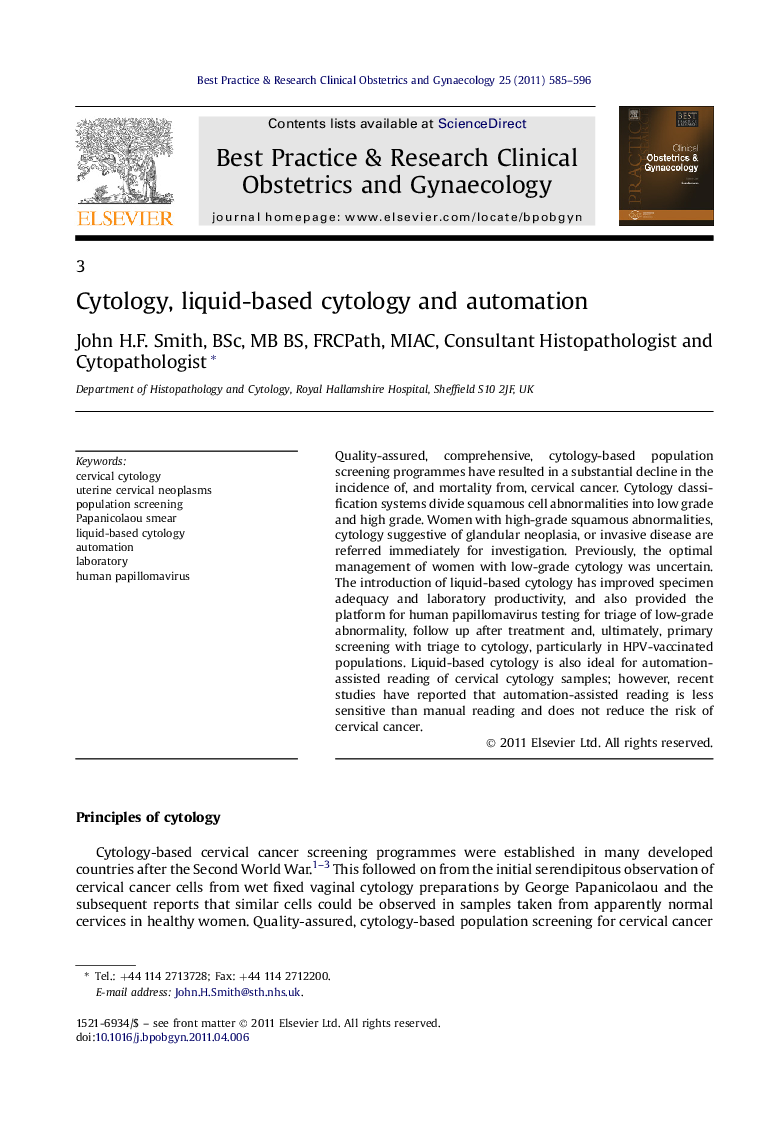| Article ID | Journal | Published Year | Pages | File Type |
|---|---|---|---|---|
| 3907534 | Best Practice & Research Clinical Obstetrics & Gynaecology | 2011 | 12 Pages |
Quality-assured, comprehensive, cytology-based population screening programmes have resulted in a substantial decline in the incidence of, and mortality from, cervical cancer. Cytology classification systems divide squamous cell abnormalities into low grade and high grade. Women with high-grade squamous abnormalities, cytology suggestive of glandular neoplasia, or invasive disease are referred immediately for investigation. Previously, the optimal management of women with low-grade cytology was uncertain. The introduction of liquid-based cytology has improved specimen adequacy and laboratory productivity, and also provided the platform for human papillomavirus testing for triage of low-grade abnormality, follow up after treatment and, ultimately, primary screening with triage to cytology, particularly in HPV-vaccinated populations. Liquid-based cytology is also ideal for automation-assisted reading of cervical cytology samples; however, recent studies have reported that automation-assisted reading is less sensitive than manual reading and does not reduce the risk of cervical cancer.
